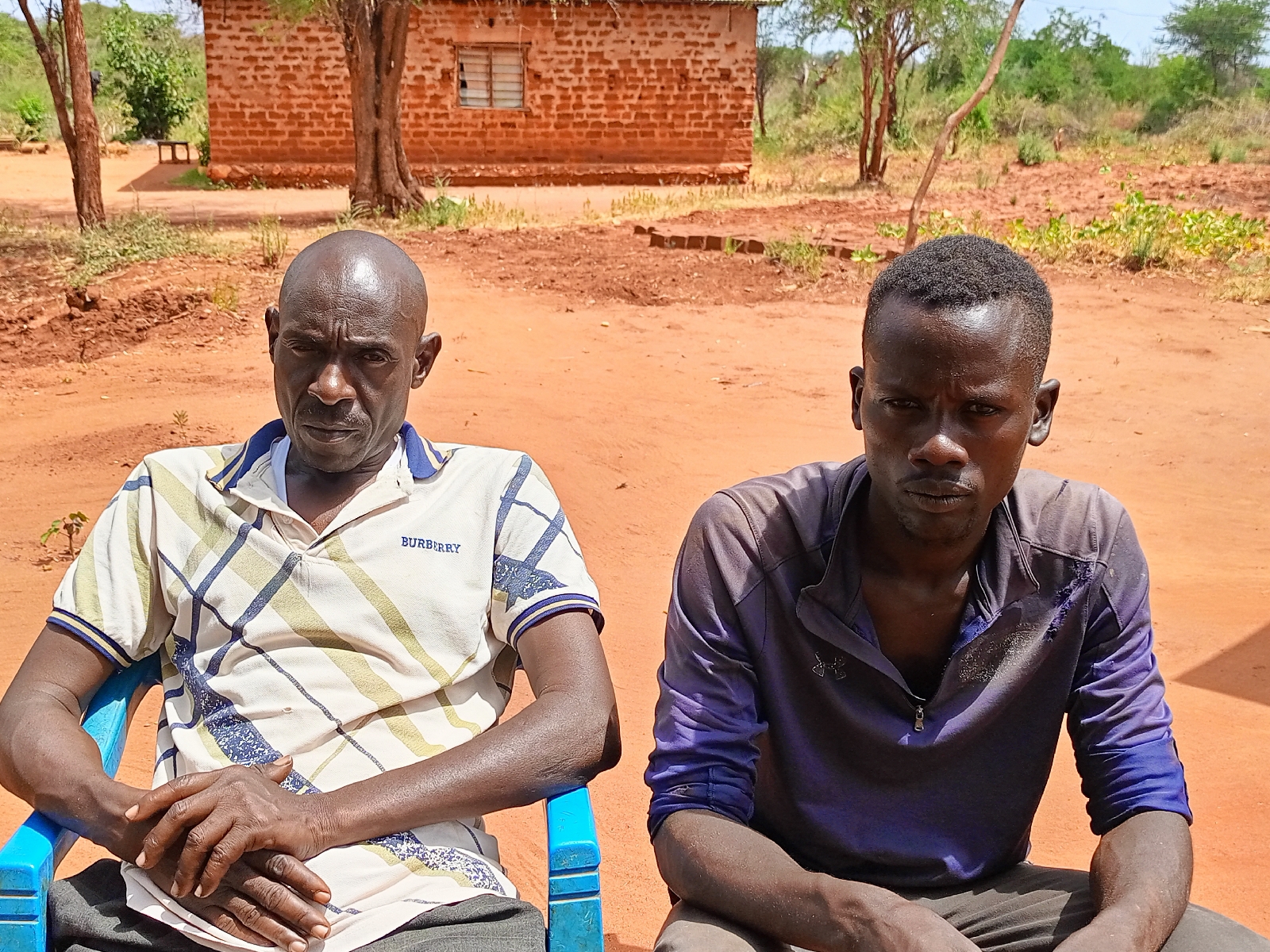By BONIFACE MWANIKI
As world marks the International Day for Neglected Diseases today, Kitui county is still grappling with the effects of Kala-azar, a killer poverty associated disease affecting Kenyans in 11 counties across the country.
Benjamin Mumo, (right), a Kala-azar survivor alongside his brother-in-law who has been taking care of him when he was ailing.|MWINGI TIMES
Despite Kala-azar being a dangerous disease with fatalities of up to 95% if not treated, very little is being done by both the national government and counties to create awareness and subdue it.
Visceral leishmaniasis, also known as kala-azar, is a life-threatening disease caused by Leishmania parasites which are transmitted by female sandflies. Visceral leishmaniasis causes fever, weight loss, spleen and liver enlargement, and, if not treated, death.
Kala-azar affects the poorest of the poor, being associated with malnutrition, population displacement, poor housing, a weak immune system, and lack of financial resources.
In Kitui, the most affected people come from areas along the border between Kitui and Tana River counties like Ngomeni and Kyuso wards.
Over 50% of people infected with kala-azar are children under 15 years.
Benjamin Mumo a victim from Twinyua area in Kyuso narrates how he battled with the diseases. Luckily, he was treated on time and has now fully recovered.
Kenya Mwingi, a social health promoter from Mivukoni location in Kyuso sub county has called upon the government to increase funding towards awareness and medication of the Kala-azar disease, so as to reduce the number of fatalities.
Mûlyûngi Julius who is in charge of public health at Kyuso Level IV hospital says that some measures have been put in place to increase awareness of the disease, despite some superstitious believes that the disease might be due to witchcraft.
In 2023, Eastern African countries ( Djibouti, Chad, Eritrea, Ethiopia, Kenya, Somalia, South Sudan, Sudan and Uganda), represented 73% of all cases worldwide.
According to the WHO, Kenya is currently among the 10 countries that together report over 90% of new cases of VL annually worldwide. VL endemic areas are found in 11 of the 47 counties of the country: Baringo, Garissa, Isiolo, Kajiado, Kitui, Marsabit, Mandera, Tharaka Nithi, Turkana, Wajir and West Pokot.
The current treatment can cure people but has a lot of drawbacks. It includes 34 very painful injections for 17 days and requires hospitalization. Because the disease is often misdiagnosed, and the treatment is difficult to access and is available only in a few hospitals far away from patients, many don’t get it.
The Drugs for Neglected Diseases initiative (DNDi) is currently working on a new treatment that would be oral, which would remove the need for hospitalization and make the treatment available in small health centres and much more accessible to people living in remote areas.














 MWINGI TIMES for timely and authoritative news.
MWINGI TIMES for timely and authoritative news.
No comments
Post a Comment